You’re at the helm, steering your company through a sea of egos. It’s not just about managing business; it’s also about navigating personalities.
If you’ve ever clashed with a CRO or CEO, you know it’s a leadership minefield out there. But don’t worry—we’re here to help you understand and strategize for these unique challenges.
Let’s delve into the dynamics of leadership roles and learn how to balance personal egos with professional responsibilities effectively.
Table of Contents
ToggleUnderstanding the Dynamics of CROs, CEOs, and Egos
It’s essential to understand how CROs, CEOs, and egos interact in a leadership setting. You’ll often find that power dynamics and leadership styles play significant roles in these interactions. Everyone has an ego, but it’s how you manage it that counts, especially at such high levels of management.
As a CEO or CRO, your style of leadership can greatly impact the organization’s trajectory. Autocratic leaders might create a power dynamic that stifles creativity and collaboration, while more democratic leaders could foster an environment where diverse opinions are valued.
You’ve got to navigate this landscape carefully. An inflated ego can disrupt harmony within the executive suite and even affect the entire company’s health. It’s not just about managing your ego; you also need to handle those of others delicately.
To succeed in this balancing act requires keen emotional intelligence and strategic thinking. Your responsibility is not merely towards achieving business goals but also maintaining a harmonious working environment where everyone feels respected and valued.
Remember: Leadership isn’t about dominance – it’s about guidance. Power dynamics should serve as tools for progress rather than weapons for control. So keep your ego in check – there’s always room at the top for humility.
The Role of Egos in Leadership Positions
In the realm of executive roles, one’s self-esteem can often play a significant part in decision-making processes. It’s important to differentiate between healthy confidence and ego-driven decisions. While self-assurance is necessary for bold moves and risk-taking, an inflated ego may cloud judgment and lead to ill-advised decisions.
Ego-driven decisions can be dangerous. They’re typically based on personal agendas rather than what’s best for the company. This tendency compromises objectivity, disrupts team dynamics, and ultimately hinders growth potential.
Conversely, empathy in leadership encourages inclusivity and boosts morale. It allows you as a leader to understand your team’s perspectives better, fostering trust and cohesiveness within the workforce.
To navigate this leadership minefield effectively, it’s crucial to strike a balance between assertiveness and empathy. You must maintain confidence without letting your ego take control, while also empathizing with your team’s needs.
Remember that as a leader, your role isn’t about stroking your own ego but focusing on driving organizational success through strategic decision making rooted in empathy. In doing so, you’ll foster an environment conducive to growth– both for individuals within the team and the business as a whole.
Common Challenges Faced by CROs and CEOs
They’re often grappling with issues such as stakeholder pressures, decision-making responsibilities, and the constant need for strategic innovation. In your role as a CRO or CEO, you’ll find that leadership styles vary, but these common challenges persist in any organization.
Firstly, stakeholder pressures can be a significant source of stress if not well-managed. You must balance their diverse interests while maintaining the company’s financial health and growth trajectory. It requires diplomatic finesse and strategic foresight to navigate successfully.
The weight of decision-making processes also rests heavily on your shoulders. Every choice you make has far-reaching implications for the entire organization. The decisions you make should not only align with business objectives but should also consider employees’ welfare and customer satisfaction.
Strategic innovation is the third challenge you’ll face regularly. In an ever-evolving marketplace, staying ahead involves constant innovation and change management. Your leadership style needs to inspire creativity while ensuring stability during periods of transformation.
Strategies for Navigating Leadership Conflicts
When you’re faced with conflicts in your role as a leader, you’ll need to adopt some effective strategies to resolve them. Conflict resolution isn’t just about addressing the immediate issue; it’s a strategic process that can influence your leadership style and future interactions.
You must first acknowledge the conflict. Ignoring it won’t make it disappear, but will instead foster resentment and disengage team members. Openly discuss the issue at hand, and actively listen to all parties involved.
Next, identify what leadership style best fits the situation. Different scenarios require different styles – from democratic to transformational leadership – depending on the severity of the conflict and personalities involved.
Your conflict resolution strategy should then focus on finding common ground rather than winning an argument. Remember, you’re working towards a collective goal; achieving this takes precedence over personal egos or individual preferences.
Finally, after resolving the conflict, reflect on what caused it in order first place. This step is crucial for avoiding similar issues in future.
The Impact of Egos on Organizational Culture
It’s undeniable that unchecked personal pride can severely impact an organization’s culture, leading to conflicts and reduced productivity. You’ve witnessed how ego-driven decisions can be damaging. They often stem from a need for individual validation rather than what’s best for the team or organization.
You must recognize when you’re making ego-driven decisions and strive towards ego dissolution. This doesn’t mean neglecting yourself entirely, it means putting the needs of the company and your team before personal agendas.
Think strategically about fostering a culture of humility within your organization. Encourage open communication and collaboration, which will help dissolve egos over time. When individuals feel valued and heard, they’ll be less likely to let their egos drive their actions.
Remember, it’s crucial to lead by example. If you exhibit selflessness in your decision-making process, others are more likely to follow suit.
Balancing Personal Egos With Professional Responsibilities
You’ve got to find a balance between your personal ego and professional responsibilities, as one can easily overshadow the other if not properly managed. Ego Mitigation is an essential strategy in this process.
While confidence in your abilities can drive success, unchecked ego may breed conflict and hinder progress.
Striving for Personality Management also means recognizing that everyone on your team has unique skills and perspectives. It’s about creating an environment where diverse contributions are valued, rather than dominated by a single strong personality.
Your ego should never limit your ability to learn or accept feedback; it’s important to remain open-minded. Just because you’re leading doesn’t mean you have all the answers – embracing humility can lead to more effective leadership.
Moreover, managing your ego doesn’t imply suppressing it entirely. After all, assertiveness is necessary at times. The key lies in discerning when it’s beneficial to let your personality shine through and when it’s better to step back.
Tips and Techniques for Effective Leadership Management
Let’s now look at some practical tips and techniques that’ll help you manage effectively and become a more successful leader.
Understanding the range of Leadership Styles is critical. You can’t lead everyone the same way, as people are unique with different motivations, strengths, and weaknesses. Flexibility in your approach is key.
Consider adopting a situational leadership style, which involves adapting your approach based on the situation at hand or individual team member’s needs. Whether it’s a coaching style for those needing guidance or an authoritative style when decisive action is required, having multiple styles at your disposal enhances effectiveness.
Moreover, boosting your Emotional Intelligence (EQ) can significantly improve your leadership performance. EQ entails recognizing and managing not only your own emotions but also those of others around you. Being emotionally intelligent means demonstrating empathy toward your team members’ feelings, leading to stronger connections.
Lastly, keep refining these skills through continual learning and feedback incorporation from others. The best leaders aren’t necessarily those who know everything but rather those who’re open to growth and improvement.
Conclusion
In navigating the leadership minefield, your ego can be a hindrance or a tool. It’s about striking the right balance between personal pride and professional responsibility.
By understanding the dynamics and challenges of CROs and CEOs, you’re equipped to build an effective organizational culture.
Remember, leading isn’t just about being in charge – it’s about guiding your team towards success.



